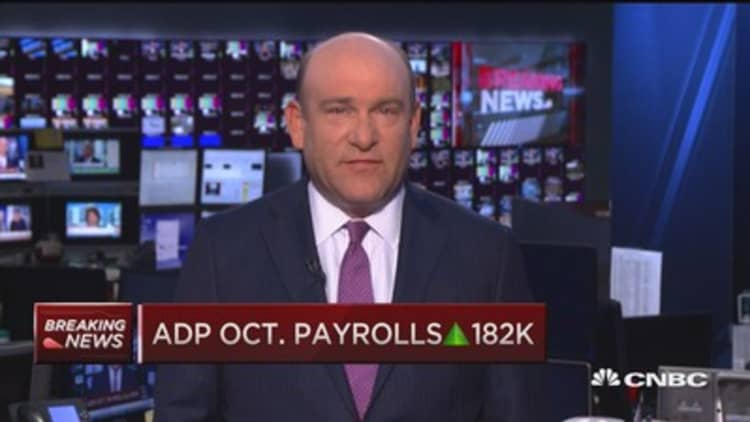
Private job gains edged lower in October, with companies adding 182,000 new positions as economic growth cooled, according to a report from ADP and Moody's Analytics.
The growth actually was a shade better than the 180,000 expected, according to FactSet, but was in keeping with a reduced pace of employment growth across the U.S. economy. The total declined from the 190,000 in September, a number that in itself was revised lower from the originally reported 200,000.
Job creation has slowed considerably from the same period 12 months ago, falling about 21 percent from October 2014. The last three months have seen an average of 184,000 jobs a month. By comparison the three-month period from October to December 2014 saw an average of 263,000 new private jobs, according to ADP and Moody's.
Nevertheless, Mark Zandi, chief economist at Moody's, rejected the notion that job creation has slowed.
"There is no meaningful slowdown in job growth," he told CNBC. "There has been some moderation because of the energy sector and manufacturing. But this job market, everything points to a very sold, strong jobs market."
Small business and services led the way in October. Companies with fewer than 50 workers added 90,000 positions, while service-providing firms contributed 158,000 of the total new positions.
Read MoreUS franchisees post best 1-month jobs gain: ADP
Construction and the trade/transportation/utilities group added 35,000 each, while professional and business services contributed 13,000. Manufacturing lost 2,000 jobs.
Companies with more than 500 employees made the smallest contribution with 29,000 new workers, a sharp decline from September's 101,000.
The ADP/Moody's report serves as a runup to Friday's Labor Department reading on October nonfarm payrolls, which is expected to show growth of 185,000 with the unemployment rate steady at 5.1 percent.
Federal Reserve officials are watching the jobs numbers closely, though they seem less concerned lately with total growth than other factors such as wage increases and the average hourly work week. Tepid wage growth has been a key factor in holding the central bank back from raising its key interest rate off near-zero percent, where it has been since late 2008.


